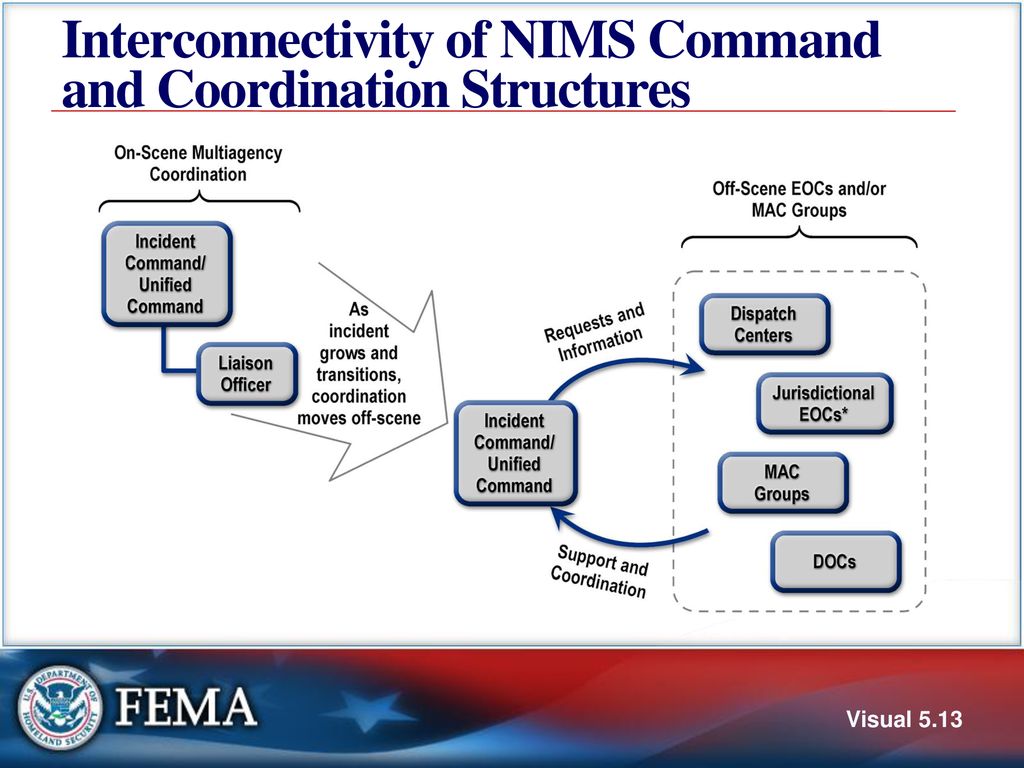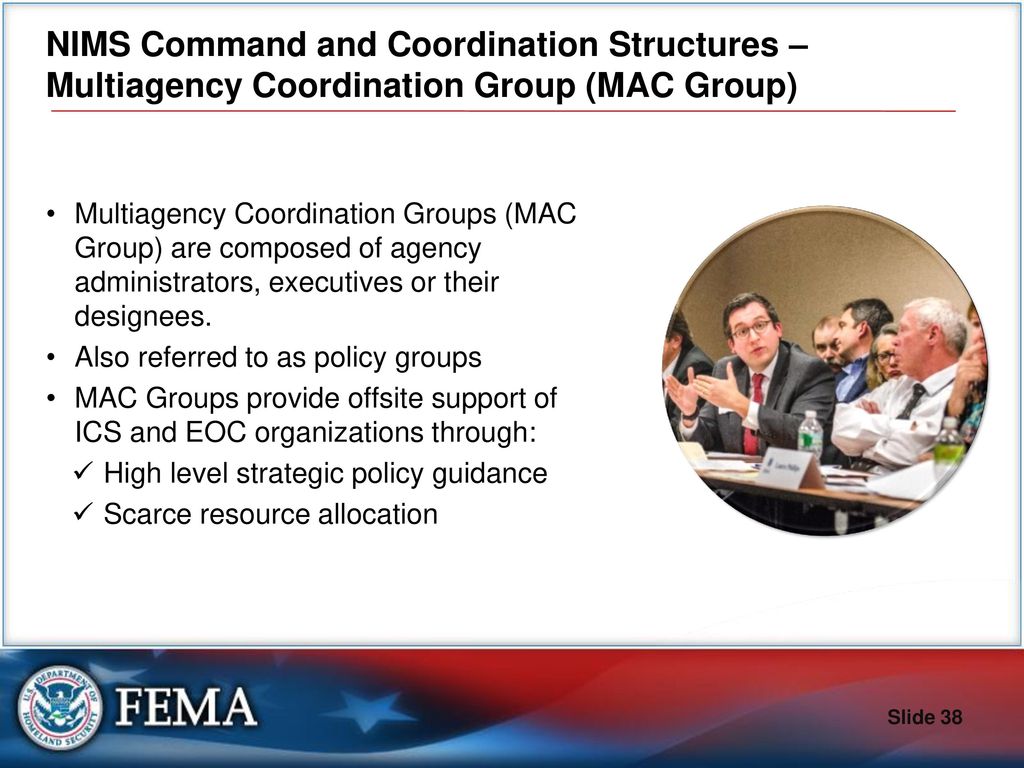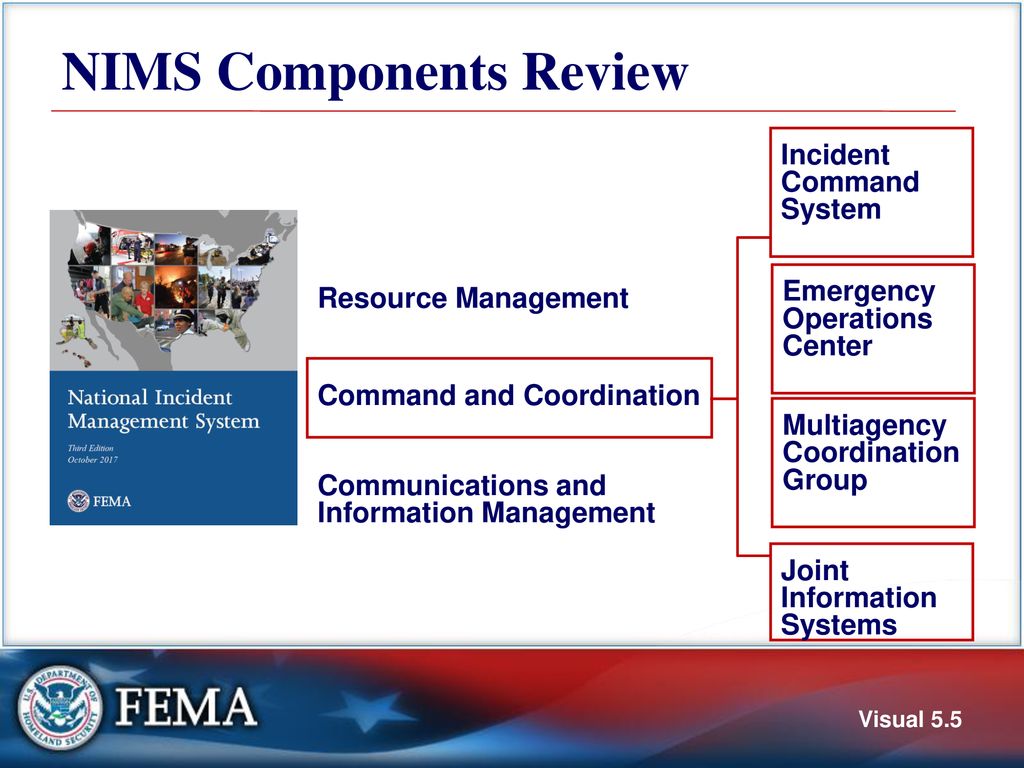NIMS (National Incident Management System), was developed by the USA for managing incidents in 2004 by President George. Command and coordination are the components of an incident command system which further includes three main components. Starting from the incident command system, a standardized approach, and coordination of emergency response toward the incident.
The multi-agency coordination provides the distribution of resources and integration of multi-agency for large-scale incidents. Whereas, the information system executes the information, plans, and strategies. All the components work together for effortless functioning, therefore, to dig deeper into the intricacies of the NIMS components that include the Incident Command System, read the article till the end.
NIMS Components
NIMS has a nationwide, consistent, and systematic approach. It has various components which work together.

Communication and information systems provide a common ground for the operating picture for all command and coordination sites including emergency management and incident responses. Though NIMS explains the requirement for the standardized framework of communication and emphasizes the common operating image, communication and information management are based on portability, scalability, redundancy, resilience, and redundancy of systems.
Resource Management
Resources that include supplies, equipment, and personnel which are in turn needed to support critical incident objectives. The requirement of the resource must be adjustable to the needs of the incident. NIMS explains standardized mechanisms to identify resource management to order and acquire, report and recover, track and demobilize.
Ongoing Management And Maintenance
Under the ongoing management and maintenance, there are two aspects: Supporting Technologies And Nation Integration Center.
Preparedness
Preparedness requires a combination of procedures, exercise, personnel qualification, and equipment certification to advance potential incidents.
Command And Coordination Elements

The command and management have been designed to be effective and efficient for incidents in command and management coordination. The standardized incident management structure lies in: The Incident Command System, Multiagency Coordination, and Public Information.
Features of ICS
ICS offers numerous features, let’s look at all of them one by one.
#1: Common Terminology:
The ICS terminology allows diverse incident management and support organizations to work together with a wide diversity of incident management functions along with maintaining various objectives such as:
- Organizational Function: stable and standard, meaning, everything is named and defined.
- Resource Description: Resources like personnel facilities, supply items, and equipment help incident management activities avoid confusion and improve the ability to exchange information.
- Incident Facilities: Used to appoint the facility near the incident area.
#2: Modular organization:
The ICS structure has developed a modular fashion that is based on the size and complexity of that incident. When there is a need for a separate functional element there will be subdivisions to enhance internal management and external coordination. The modular organization expansion and establishment rest with ICS. As the organization’s requirements rest on the base of the situation and the number of management and positions expand according to the incident.
#3: Manageable period of control:
Supervisors should be able to supervise and control their assistants along with communicating and managing the resources under their supervision, as ICS includes safety measures, resources, and many other features.
#4: Management by objectives :
Management by objective is there throughout the ICS organization and it includes:
- To measure the performance you need to document the result and check corrective actions.
- Develop the assignments, plans, protocols, and procedures and issue them.
- Curating the impulsive incident objectives.
#5: Comprehensive Resource Management
You need to maintain the up-to-date scenario of resource utilization as it is the main component of incident management and emergency response. Resources have to be shown in a clear manner that includes supplies, facilities, and personnel which is required for the availability of allocation.
#6: Incident Facility And Location:
Many support facilities are located in the area of the incident as it depends upon the size and complexity to achieve the purpose. The ICS will tell us the location from where we can get all the facilities that are required for the situation such as staging areas, base camps, distribution sites, etc.
#7: Establishment And Transfer Of Command:
The command needs to be clear from the start of the incident and should be transferred appropriately as it includes the essential information for safe and successful operations.
#8: Chain Of Command And Unity Of Command:
Chain of command means the line of authority within the positions of an incident management organization. Unity of command means that everyone has a supervisor or boss to whom we report at the time of the incident.
Accountability:
There are Effective accountability resources at the jurisdiction level as it includes the ICS principles and the process to help and ensure accountability as it follows.
1 Span Of Control
2 Resource Tracking
3 Personal Responsibility
4 Unity of Command
Incident commander Responsibility

Undoubtedly, the Incident Commander System can be employed in finance, administration, planning, logistics, and operations along with managing the responsibility of the entire incident. Some of the essentials are:
- Be sure about safety, especially at special events.
- Giving information to the stakeholders like government partners or industry representatives or other members.
- Maintaining liaison with companies, firms, organizations, and agencies participating in the incident.
The incident commander might appoint more than one deputy, but the deputy commander should be qualified as the incident commander.
Special Event Planning And ICS
Planning for a special event requires preparation in advance and all the stakeholders which are involved need to make a blueprint of an appropriate strategy for special events. With the help of ICS, there will be no more last-minute hustle and bustle on how to use resources accurately, coordinate, and how to communicate during special events as ICS is specialized in the following domains:
- Resource Management
- Coordination
- Communication
- Evaluation
- Delegation Of Authority
Benefits of ICS
How ICS can benefit you to plan or manage any event:
- Always be sure that your organization or team is ready to face obstacles during the event and knows how to manage them.
- Organizations should have a good understanding of all the stakeholders involved in that event.
- Try to avoid duplication of work and save money and time by better management of resources.
NIMS provides us with a systematic approach to guide the departments. There are many components of NIMS like communication or resource management, command, and management. Undoubtedly, there are numerous advantages of ICS but I highly doubt that there are any disadvantages. ICS depends on its exceptional features like modular organization, accountability, etc which are explained in the detailed version of this article.

